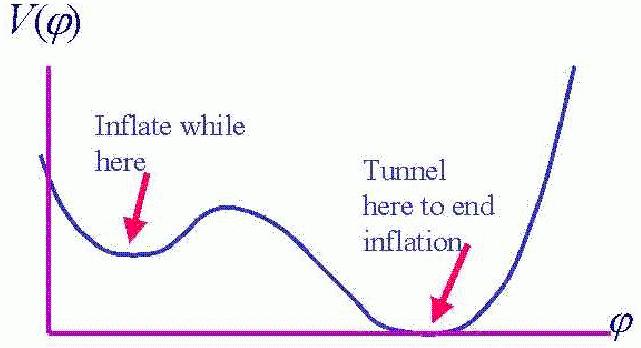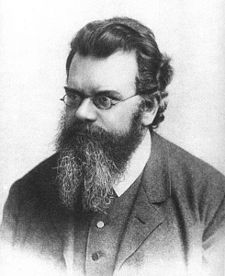 Sheldon Cooper is named after two people: physicist Leon Cooper and – with apologies to Sheldon Glashow – the film actor and producer Sheldon Leonard.
Sheldon Cooper is named after two people: physicist Leon Cooper and – with apologies to Sheldon Glashow – the film actor and producer Sheldon Leonard. Today, on the last day of February 2013 and the last day of a 700-year-long popeful period, the first man in the list celebrates his 83th birthday. Congratulation to Leon Cooper! He is of course most famous for his and BCS theory of superconductivity for which they received the 1972 Physics Nobel Prize.
While it's a well-known fact that CBS named Sheldon Cooper partly after Leon Cooper, it is a much less well-known fact that CBS itself stands for Cooper-Bardeen-Schrieffer, the three men who authored the modern theory of superconductivity and shared the Nobel prize that I mentioned above.
Leon Cooper was born in the New York City.
During his career as a student or researcher, he was affiliated with Columbia, IAS, University of Illinois, Ohio State University, Brown, and CERN. But perhaps the most interesting school is one at the beginning, the Bronx High School of Science. This is a true gem among the U.S. high school magnets for physical sciences. Even if we restrict ourselves to Nobel prize winners, the alumni include Cooper, Glashow, Weinberg, Melvin Schwartz, Hulse, Politzer, Glauber, and Lefkowitz (for chemistry). Not even my high school in Pilsen has collected this many Nobel prizes. ;-)
The three men, BCS, teamed up to write a Physical Review article on superconductivity in 1957. However, I chose Cooper's own 1959 paper, Theory of Superconductivity, as something you may want to read.
Superconductivity means that the electrical resistance of a material drops exactly to zero. Make no mistake about it: It's not just small. It's \(0.00000\). Superconductors qualitatively (and not just quantitatively) differ from ordinary conductors whose resistance may be small but it is decidedly positive. (The very fact that materials and other objects may differ "qualitatively" at all depends on quantum mechanics: properties of things are often quantized.) Superconductivity was first observer by a Dutch physicist, Heike Kamerlingh Onnes, already in 1911. However, it took quite some time to understand where it came from.
In 1950, Landau and Ginzburg designed their phenomenological or "macroscopic" Landau-Ginzburg theory of superconductivity. The free energy is given by a quartic function of \(\psi\), a complex (and charged) order parameter, plus other terms expected in interactions with electromagnetism. The quartic function indeed resembles the potential for a Higgs field. The discoverers of the Higgs mechanism were undoubtedly inspired by the Mexican hat potential that should have been called the Landau buttocks potential – it was actually invented by Landau long before the war in his description of the second-order phase transitions. The Landau-Ginzburg theory combined that theory of the second-order phase transitions with ideas about Schrödinger's equation. Well, I often emphasize that the wave function isn't a classical field but if there are many particles exactly in the same state, their "common" one–particle wave function does become a classical field and the field \(\psi\) in the Landau-Ginzburg theory is an example.
In a certain sense, superconductivity allows you to observe "quantum" phenomena at macroscopic scales. This was the explanation of my instructor of electromagnetism and the dean of my Alma Mater in Prague, Prof Bedřich Sedlák, why he was so excited by his discipline of low-energy physics. However, the description is a bit misleading because once \(\psi\) loses its probabilistic interpretation and becomes a classical field, it's just another classical theory of physics even though it mathematically copies Schrödinger's equation.
The 1957 BCS theory of superconductivity came a few years later and it was a microscopic one. It was suddenly recognized that the complex field \(\psi\) was an effective field creating or annihilating particular particles, the Cooper pairs composed of two electrons. The Cooper pairs' charge is therefore equal to \(-2|e|\).
Why do the Cooper pairs exist at all? It was understood by Cooper himself in 1959. Just like there is an attractive electrostatic interaction between protons and electrons in the Hydrogen atom (opposite charges attract, a feature of forces with spin-1 messengers such as photons), there is an attractive interaction between pairs of electrons mediated by spin-0 phonons (because 0 is an even spin, the rule for the "like/opposite charges attract/repel" gets reversed relatively to what you know from the spin-1 electrostatic force).
So some free electrons inside the superconductors decide to combine into pairs that resemble other bound states such as the Hydrogen atoms. There are differences in the numerical parameters. While the binding energy of the Hydrogen atom is \(-13.6\eV\), it is just in millielectronvolts (the precise value depends on the material) in the case of the phonon-induced bound states. You see that the binding energy is thousands of times smaller than it is in the case of the Hydrogen atom. For this reason, the internal size of the Cooper pair is also much larger – longer radius - than the size of atoms. And yes, because the electrostatic energy goes like \(1/r\) and due to the virial theorem, it represents a fixed portion of the total energy, the radius is roughly speaking inversely proportional to the binding energy. It follows that the Cooper pairs are thousands of times larger than the atom!
Note that the Cooper pairs contain even numbers of fermions (electrons) so they're bosons, they may form Bose-Einstein condensates of various sorts, and this is really the basic reason behind superconductivity (as well as superfluidity). You may squeeze as many bosons to a region as you want. This seems bizarre: if we just reinterpret a group of electrons (fermions) as a collection of pairs of electrons (bosons), we may apparently circumvent the Pauli exclusion principle. However, there's no paradox here. Because the Cooper pairs are so large relatively to the atom (the typical volume that an electron likes to occupy), the condensation of the Cooper pairs won't allow us to compress too many electrons into a volume, anyway.
If we try to squeeze these electrons too much and pump many, many millielectronvolts into the Cooper pairs, we just break them apart. That's the analogy of the ionization of atoms.
The Landau-Ginzburg and BCS theories of superconductivity are cornerstones of condensed matter physics, of course. They're also among the key examples of the ideological proximity of concepts in condensed matter physics and ideas in particle physics. As I said, the LG theory helped the Higgs mechanism to be discovered. In fact, due to this analogy, some people refer to the electroweak supersymmetry breaking as "electroweak superconductivity". The LG models are often used as defining equations for certain conformal field theories in 2 dimensions (that are also used in string theory). And there are many other friendly relationships. One could say that particle physics has owed a lot to condensed matter physics. To some extent, it began to repay the debt once the AdS/CFT correspondence was discovered.
I have mentioned Prof Sedlák's meme that superconductivity shows quantum phenomena at the macroscopic scales. The classical field inspired by the Cooper pair's wave function may spread over a whole macroscopic superconductor. However, we see some "macroscopic quantum mechanics", and in this case a genuine one, even if we focus on the structure of the Cooper pairs.
Some people who don't quite think about the world in the quantum way are often imagining that the quantum uncertainty of the position of an electron may only be as small as an atom or a molecule or even smaller. They believe that there is some unimportant, strange, localized subtlety (that's how they would describe quantum mechanics) that affects the atomic distances but it surely can't influence longer distances where their classical intuition must always be allowed to take over.
However, the Cooper pairs show that this belief is completely wrong. The internal structure of a Cooper pair is described by a wave function similar to the Hydrogen atom wave function – it's just thousands of times larger (when it comes to linear distances). It's totally important how this internal wave function of a Cooper pair looks like at distances close to a micron. If you decided to suppress the rights of quantum mechanics to dictate the physics of all the length scales, time scales, and energy scales, you would be instantly led to predictions that violate the observations of superconductivity.
Let me mention a highly relevant example. Some people such as Ghirardi, Rimini, and Weber and their mindless followers believe that the wave function may be interpreted as a classical wave, in a "realist" fashion. However, wave functions keep on spreading which isn't nice for the world around us that isn't speading. So they solve this problem – a problem that directly follows from the denial of the probabilistic meaning of the wave function (in proper, probabilistic QM, there's no problem: probabilistic distributions may spread arbitrarily as the uncertainty in our knowledge grows but they still describe sharp objects and sharply separated, mutually exclusive options) – by certain centralist "kicks". Each \(10^{15}\) seconds or so, but otherwise randomly, each particle is given an "order" from the GRW headquarters of Nature to "behave". This order means that the wave function for the location of the particle is requested to be spread at most 0.1 microns or so. Each electron is asked to "shrink" to a Gaussian of this size each \(10^{15}\) seconds; its center is probabilistically chosen from the prior probability distribution. (All the numbers and the shape of the hypothetical post-collapse packet are completely made up, of course.) With this bizarre mechanism in their hands, GRW and others believe that Nature sometimes measures Herself, so no one else has to do so: there's no room for a subjective or probabilistic or epistemic interpretation of the wave function, they want to believe.
Because the Cooper pairs are typically somewhat larger than that, perhaps between 0.1 and 1 micron, such an "ordered collapse" sent to an electron simply destroys the internal structure of a Cooper pair. Needless to say, if such deviations from proper quantum mechanics existed, they would have observable consequences. Lots of electrons shooting out of the Cooper pairs freshly destroyed by the GRW "kicks" would be observed every second. The superconductors would lose their perfect conductivity, too. Needless to say, none of these effects exists.
It is critically important that your theory allows the wave function to spread over arbitrarily long distances – not only atomic distances but also 5,000 times longer distances and one could construct systems where quantum mechanics shows up at even longer distances (the Cooper pairs are so large because the phonon-electron interactions are rather weak; one could arguably find systems with even weaker interactions) – and because it's so critically important for your theory not to prevent the wave functions from spreading into huge regions that we start to see with our naked eyes, it's also obvious that the wave function must be interpreted probabilistically because no wave (wave function) that we may objectively observe is spreading into micron-like distances.
Superconductivity is just another example of the slogan "Don't mess with quantum mechanics". Any attempt to squeeze quantum mechanics into a straitjacket defined by some special conditions (e.g. very short, atomic or subatomic distances) – instead of admitting that quantum mechanics, including its features that so many people find counter-intuitive, governs all phenomena in the world, regardless of the scale – will inevitably lead to conflicts with experiments.
And that's the memo.










